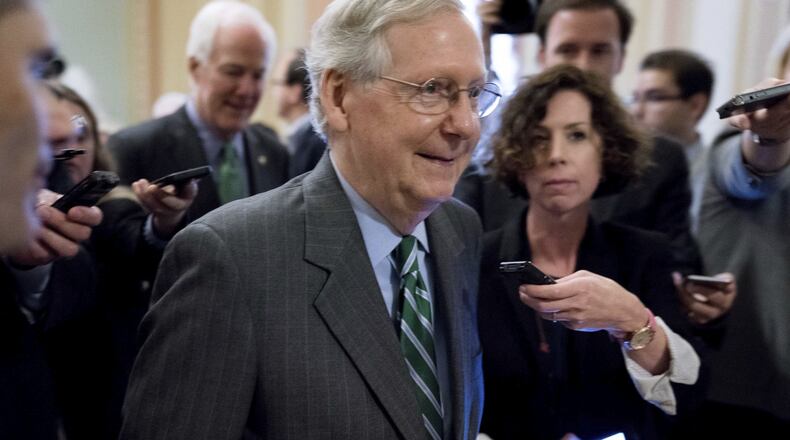Updated at 1:52 p.m. ET: From The Associated Press: "Lacking votes, Senate GOP leaders abruptly delay vote on health care bill until after July 4th recess."
Original story: Early Tuesday, Sen. Mike Lee (R-Utah) said he will oppose beginning debate on the Senate health care bill, voting no on a procedural vote that would put into motion the final vote for an overhaul of the country's health care system.
Sen. Susan Collins (R-Maine), Sen. Rand Paul (R-Kentucky), and Sen. Dean Heller (R-Nevada) have said they, too, will likely oppose the procedural motion that allows debate on the bill to start. All four senators have said they would need to see alterations to the GOP version of the bill to repeal the Affordable Care Act or Obamacare before they would vote to move forward.
On Monday, the Congressional Budget Office "scored" -- or estimated the cost -- of the bill. Senate Majority Leader Mitch McConnell (R-Kentucky) said he hoped to have a vote on the bill by Thursday before senators leave Washington D.C. for the Fourth of July holiday recess.
So what will happen next with the bill? Will we see a vote? Here’s a look at how the bill would become a law.
Since the CBO score is in, the Senate parliamentarian will meet with McConnell and Senate Minority Leader Chuck Schumer (D-New York) to make sure that the bill as written is in line with the rules of reconciliation. Reconciliation allows legislation to pass the Senate with a simple majority vote of 51-49. Reconciliation does not allow for a filibuster, so a senator could not delay a vote on the bill indefinitely.
Once the bill is cleared for reconciliation, and if McConnell feels it can survive, he will take the bill to the Senate floor.
There, the bill faces a procedural step called a “Motion to Proceed” that allows the Senate to begin debate on the legislation. If the vote for that procedure – a simple majority vote – fails, then the bill does not go to the Senate floor for debate or for passage.
If it survives the Motion to Proceed, the bill heads to the floor.
Once the bill is introduced, a 20-hour window for debate begins. The debate time is divided between Democrats and Republicans. The debate process allows for speeches about the bill and amendments and motions to the legislation.
After the 20 hours of debate, there is a little more time for senators to offer amendments to the bill with no debate.
Eventually, someone will call for a “Motion to End Debate,” otherwise known as a “cloture” vote. The cloture vote ends all discussion on the bill and moves the legislation to one final vote on the Senate floor.
During that vote, McConnell can only afford to lose two GOP votes and still see the bill pass, since all of the Democratic senators have said they will vote no on the bill. He would do that with the help of Vice President Mike Pence, since the vice president has the power to break a tie vote in the Senate.
About the Author
The Latest
Featured


